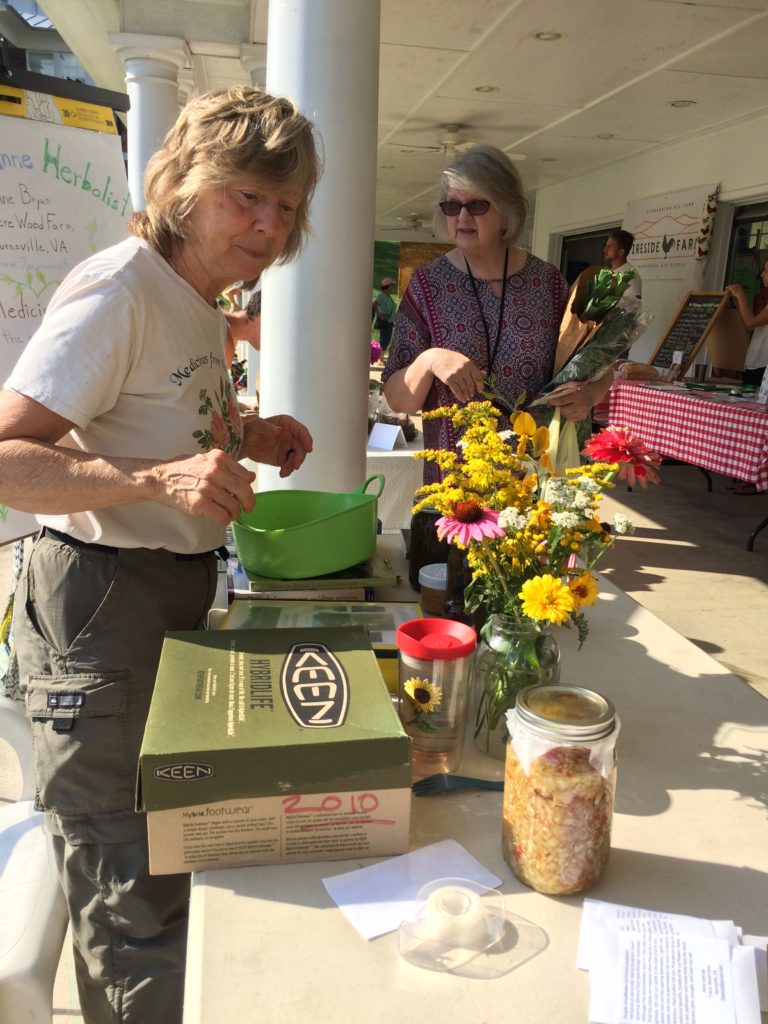The following was submitted to the Journal of Medicinal Plant Conservation for inclusion in the Spring 2019 publication.
We’re writing this summary, comfortable in our little cottage, while the land around us is experiencing the polar vortex, griping much of the nation this January (2019). While we’re concerned about the health of our plants, we take comfort in knowing our work to improve soil health improves the resiliency of our sanctuary and its ability to respond to ever-increasing severe weather events associated with climate change.
Upon seeing our United Plant Savers sign, visitors inquire about the purpose of a botanical sanctuary. We enjoy sharing information about the UpS Botanical Sanctuary Network and how we feel we’re contributing to the UpS mission. On several occasions we’ve had to clarify that the network initiative is a partnership between a non-profit organization and citizens volunteering their land and labor, not a state or federally funded program. These conversations often drift to a discussion of who should regulate the growing, harvesting, preparation and dispensing of herbal medicine. Until the plants can speak for themselves, we’re happy to be their spokespersons!

Taking advantage of the significant slope of our land, we installed a series of swales, each with a themed plant (medicinal herbs, berries, and nuts). In the nut swale, hazelnuts and chinquapins should be of sufficient size in a couple years to provide enough shade and protection for the incorporation of at-risk medicinal plants. Our task this year is to identify (and grow) plants associated with at-risk medicinal plants in nature. In addition to planting these “companion” plants, or “guild members,” in our forest, we will incorporate them into our swales so at-risk medicinals will feel right at home. Between our swales, we allow just enough space for walking paths and let the rest of the land to go wild with native grasses and wildflowers.
Last year, we built an electric deer fence (image) to protect approximately 2 acres of cultivated land. During the planning phase, we thought it prudent to extend the perimeter of the fenced-in area to include a portion of the forest to separate deer from future plantings of ginseng and goldenseal. After our faithful BCS tractor (“Tina”) blazed a path through the forest, we attached 2×4’s to metal fence posts at a 45 degree angle and affixed seven wires, spaced approximately 1’ apart. After about a month of “learning,” that involved regular repair and replacing of electrical lines, the deer “accepted” the proposition that this portion of the forest is “off limits.”


In 2018, we gave nine presentations on sustainable land care practice, highlighting our botanical sanctuary. These presentations addressed diverse audiences ranging from local garden clubs, native plant societies, patrons at public libraries and even one at a the Biodynamic Farming conference in Portland, Oregon. Joe taught a day-long workshop on woody plants at the Allegheny Mountain Institute, a permaculturally-inspired educational non-profit organization training young adults in creative food growing systems and public outreach. Anne was a featured herbalist at our local farmers market.
We appreciate the support and information made available by UpS on their website, Facebook posts, and in the Journal of Medicinal Plant Conservation. Reading about the great things happening at the UpS Botanical Sanctuary and the other sanctuaries in the network, renews our sense of purpose and realization that our sacred 7 acres is part of a much greater whole.
In 2019, we continue to practice the three principles we learned at the Findhorn Foundation, an intentional community in Scotland: co-create with the intelligence of nature, practice inner-listening, and that our work is “love in action.”


